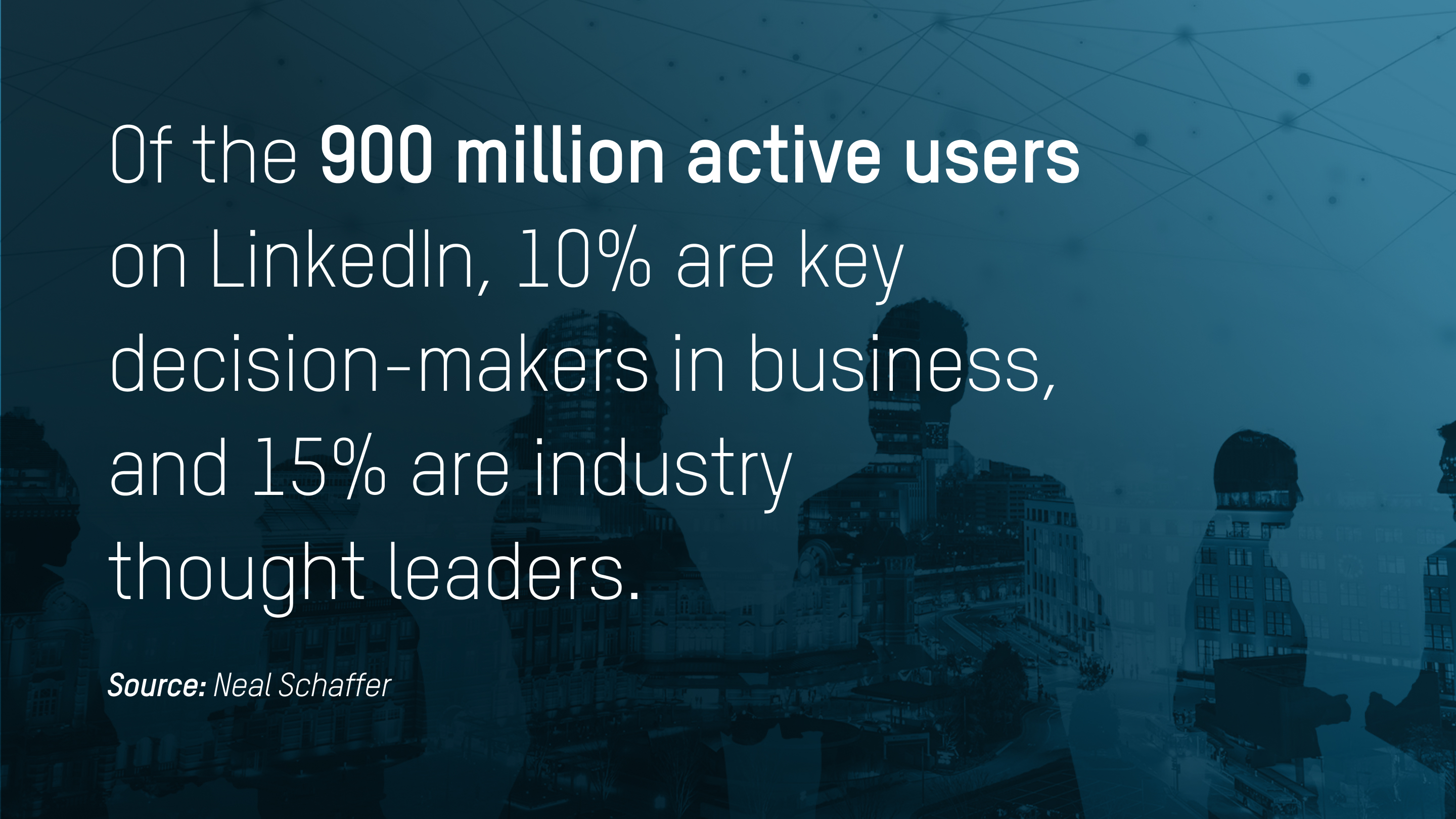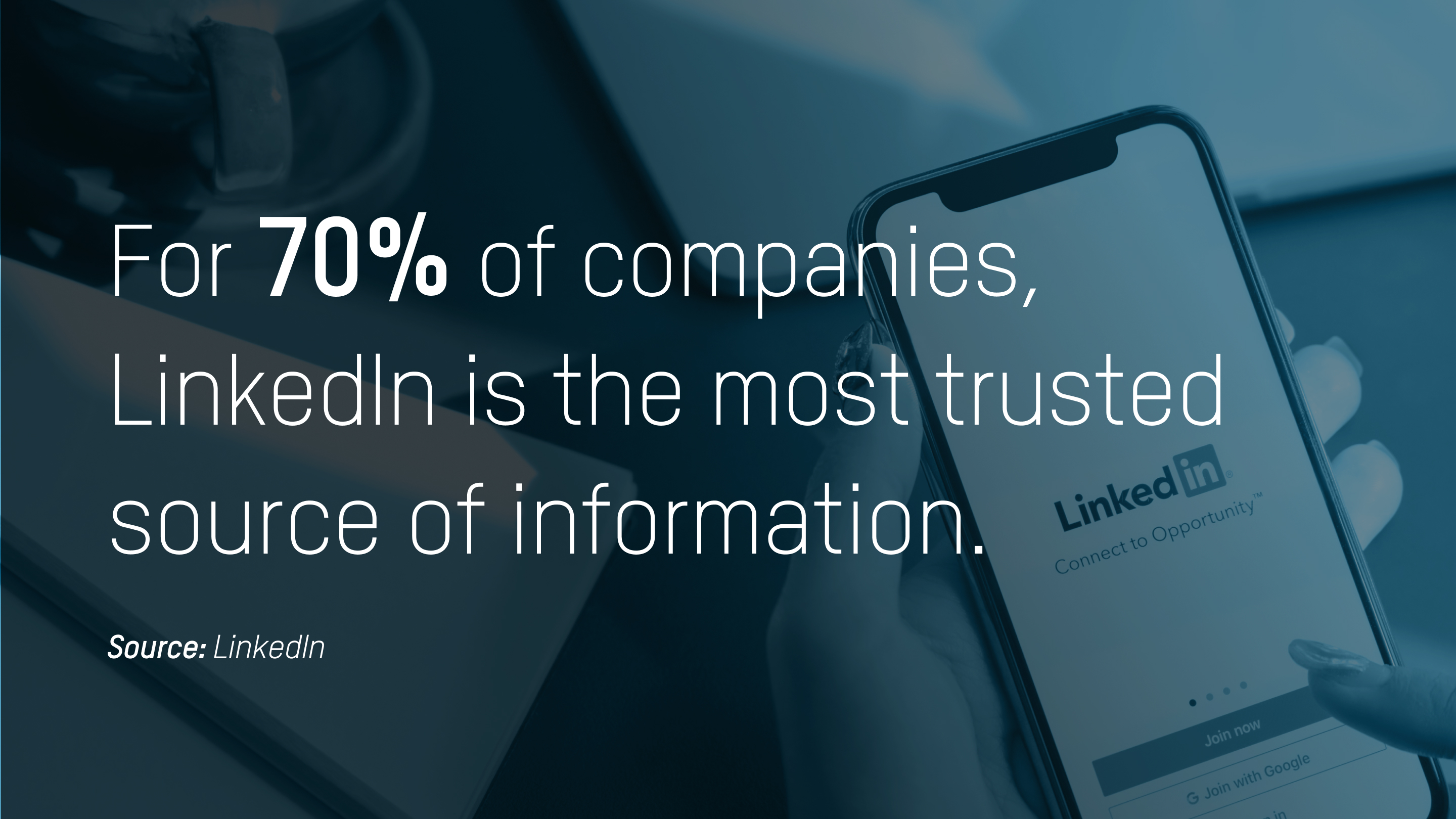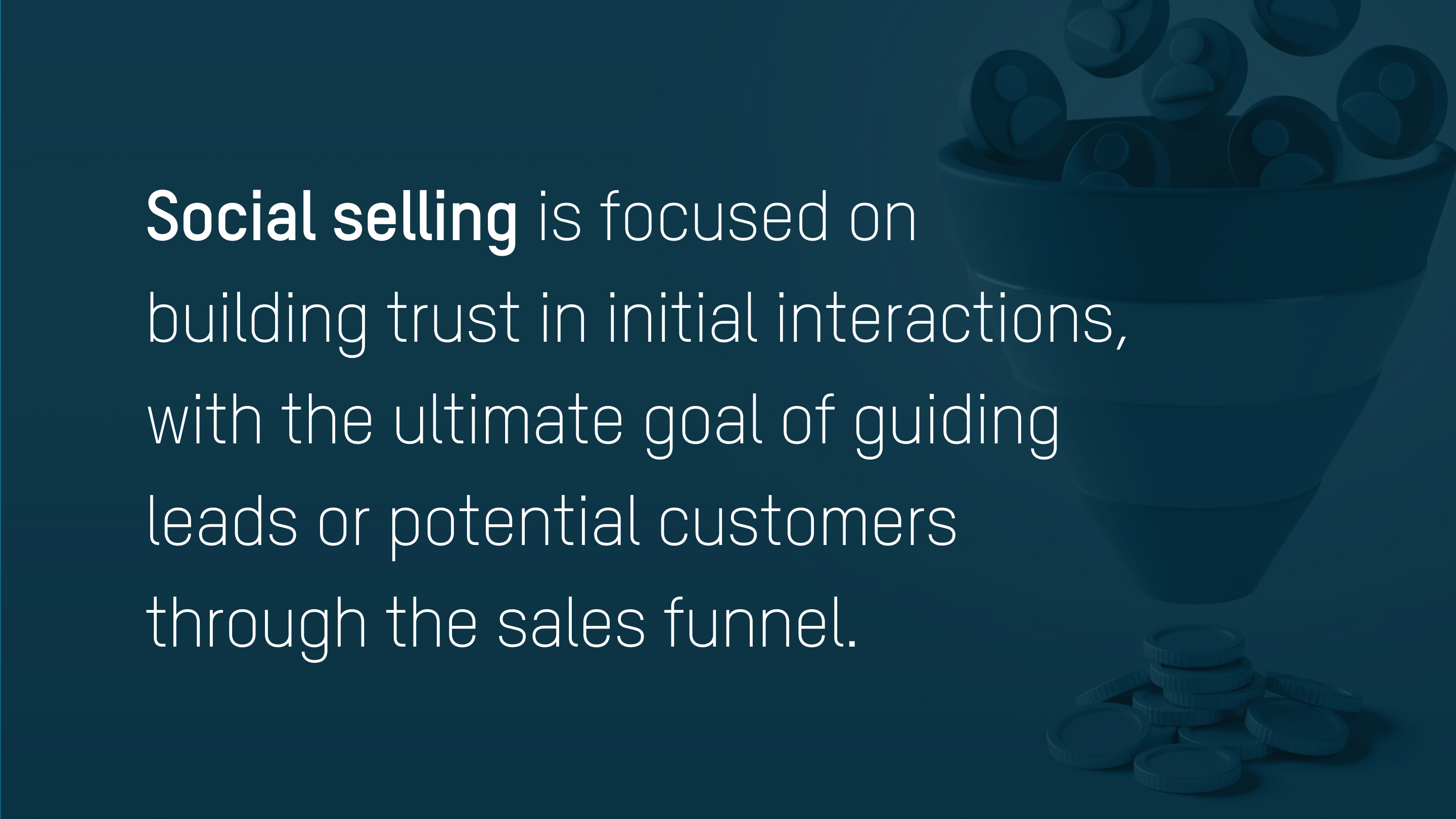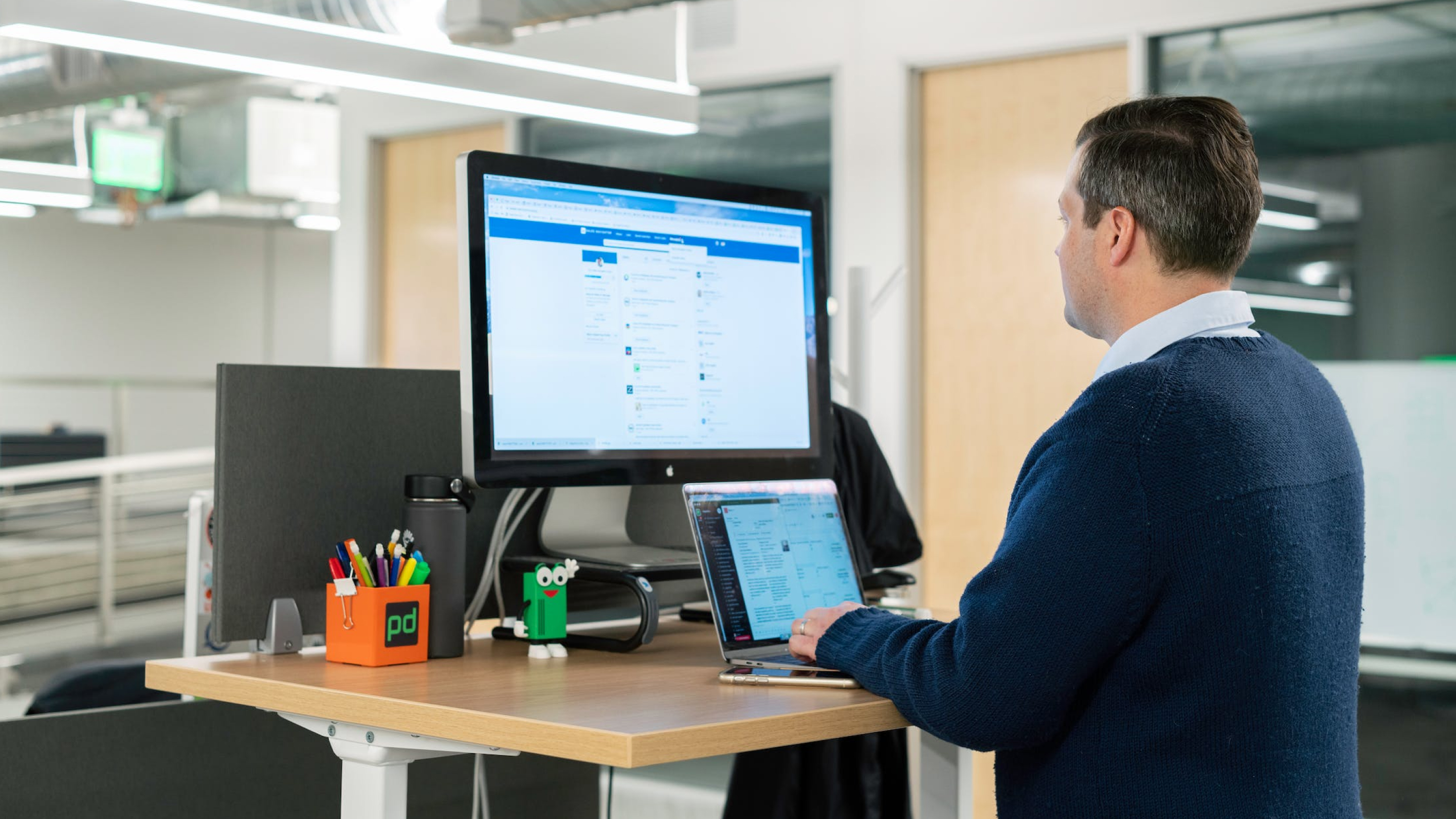Focusing solely on social media’s big three is fine, but don't forget to keep LinkedIn on your radar too. LinkedIn is equally powerful in driving substantial business growth, especially for B2B companies. It's not just an effective networking channel for professionals; LinkedIn is also a powerful B2B marketing tool.
Power Lies in LinkedIn
LinkedIn may very well be the best platform for effective B2B marketing. You get access to a large network of influential people—entrepreneurs, industry experts, corporate executives, and policymakers—who have twice the buying power of the average online audience.

LinkedIn is truly a goldmine for businesses looking to significantly boost their B2B marketing efforts. In fact, out of its 900 million users, 10% hold key decision-making roles in the business world and 15% are influencers in the truest sense—industry thought leaders. You get to showcase your expertise and engage with influential individuals, ultimately boosting your visibility and gaining relevant contacts for your business.
With LinkedIn B2B marketing, you can be certain that your content reaches the right audience—those who can drive a significant impact on your business—considering that 45% of those who read LinkedIn articles are management-level professionals.

In addition, establishing thought leadership is crucial for capturing attention and building trust in B2B marketing, and LinkedIn stands out as the most effective platform for achieving this. As reported, 70% of B2B companies consider LinkedIn their trusted source of information, compared to other social media platforms like Facebook, Instagram, and X, which often raise doubts among consumers regarding their accuracy.
But because of this, many make the mistake of treating LinkedIn as nothing more than a content-sharing platform—a mere extension of their traditional social media profiles. They often take the same content from Facebook and modify the tone slightly to cater to professionals. Although it can be used this way, that’s not what LinkedIn is specifically designed for.
It's All About Social Selling
If you're wondering why you haven't been seeing results on your LinkedIn B2B marketing, it's likely because you're not using it right. You have to start integrating the concept of social selling into your LinkedIn marketing strategy.

Social selling is a way to generate potential customers using social media. Think of social selling as a way to set the stage for future sales. It’s focused on building trust in initial interactions, with the ultimate goal of guiding leads or potential customers through the sales funnel. Some define it as traditional selling in the digital age but with a personal touch.
However, social selling isn't like a one-and-done cold call or just buying a list of leads and hoping for the best. It's about injecting real value into your interactions, having meaningful conversations, and smoothly guiding prospects through the purchase funnel. Additionally, social selling tries to strike a balance between education and entertainment, making the whole process feel natural.
Sure, social selling can seem like a lot of work, but the payoff is worth it. B2B marketers who've embraced social selling are 51% more likely to hit their sales targets. Moreover, they gain a leg up on their competitors because not everyone comprehends the power of social selling and B2B marketing on LinkedIn. An essential aspect of this content marketing strategy is understanding LinkedIn’s algorithm to effectively reach your target audience.
Let's Talk Algorithm
LinkedIn uses a unique algorithm, which you need to know if you want to improve your LinkedIn marketing strategy for B2B companies. While the concept of relevance is seen across various social media platforms like Instagram, TikTok, Threads, and others, LinkedIn has a special way of sorting out your feed.
One distinctive feature of LinkedIn's algorithm is that it takes your connection strength or degree of connection into account. Basically, LinkedIn encourages you to expand your professional networks by connecting with individuals within your industry. This not only fosters meaningful connections but also facilitates content discovery.
In the LinkedIn feed, priority is given to first-degree connections—those immediate connections you have. The platform assumes that you share a closer professional relationship with these individuals, pushing their updates up.
Following first-degree connections, you have second and third-degree connections, as well as out-of-network connections. Posts from out-of-network connections are less likely to appear on your feed by default; you need to manually search for them.
Aside from degrees of connection, engagement is another crucial factor in LinkedIn's algorithm. It's a no-brainer that posts with more likes, comments, and shares tend to show up on the top of the feed. However, LinkedIn goes a step further by considering the length of engagement. If a post continues to receive comments, likes, and shares over time, it can remain visible in users' feeds for an extended duration.
So how can you increase your engagement and connection strength on LinkedIn?
How to Optimize Your LinkedIn Content
Here are some practical tips for creating a LinkedIn marketing strategy that gets noticed by the B2B audience.

Consider Degrees
Optimize your LinkedIn content with connection degrees in mind—first, second, and third-degree connections.
If you want to engage with your first-degree connections, publish content that touches on insights and updates relevant to your field of expertise or industry. Craft content in a way that highlights your expertise and authority, as LinkedIn rewards expert posts. As part of your B2B content, don't hesitate to showcase personal achievements and career milestones too.
It’s also crucial to connect with your second and third-degree connections, who are valuable networking opportunities for you. So make it a point to create B2B content that has a wider topical scope but is still within or related to your industry to a reach broader audience.
Chime In
Are you using LinkedIn solely as a content publishing platform? If so, it's time to consider a change, as this approach may hinder your ability to increase engagement.
Instead, actively engage with the platform by commenting, liking, and sharing posts that align with your interests and expertise. Also make sure they’re meaningful, as LinkedIn is more strict at rewarding comments. For instance, avoid generic feedback like “I agree,” “looks great,” etc. Sharing unique insights in the comment section to facilitate active discussion with other LinkedIn users is far more valuable.
Insert Snaps
Like other social media platforms, images matter. It’s reported that LinkedIn posts with images rack up a whopping 98% more comments compared to text-only content. Creating a carousel of images or custom collages with 3–4 images in a single post is also key for increasing engagement. To put this in perspective, posts with 4 images are nearly 4 times as engaging, and if you push it to 8 images, you'll see an almost tenfold increase in engagement. If you want to get noticed, using multiple images should be part of your LinkedIn content strategy.
Keep it Reel
Short-form videos on LinkedIn can increase engagement by up to 5 times more. And since many members watch videos without sound, adding closed captions is a smart way to captivate and involve your audience. The icing on the cake? A significant 73% of B2B marketers report that video has a positive impact on their digital marketing ROI. It might be a good idea to roll out more bite-sized content on your LinkedIn to drive more engagement.
So, if you're still on the fence about including LinkedIn in your digital marketing strategy, now's the perfect time to begin!



